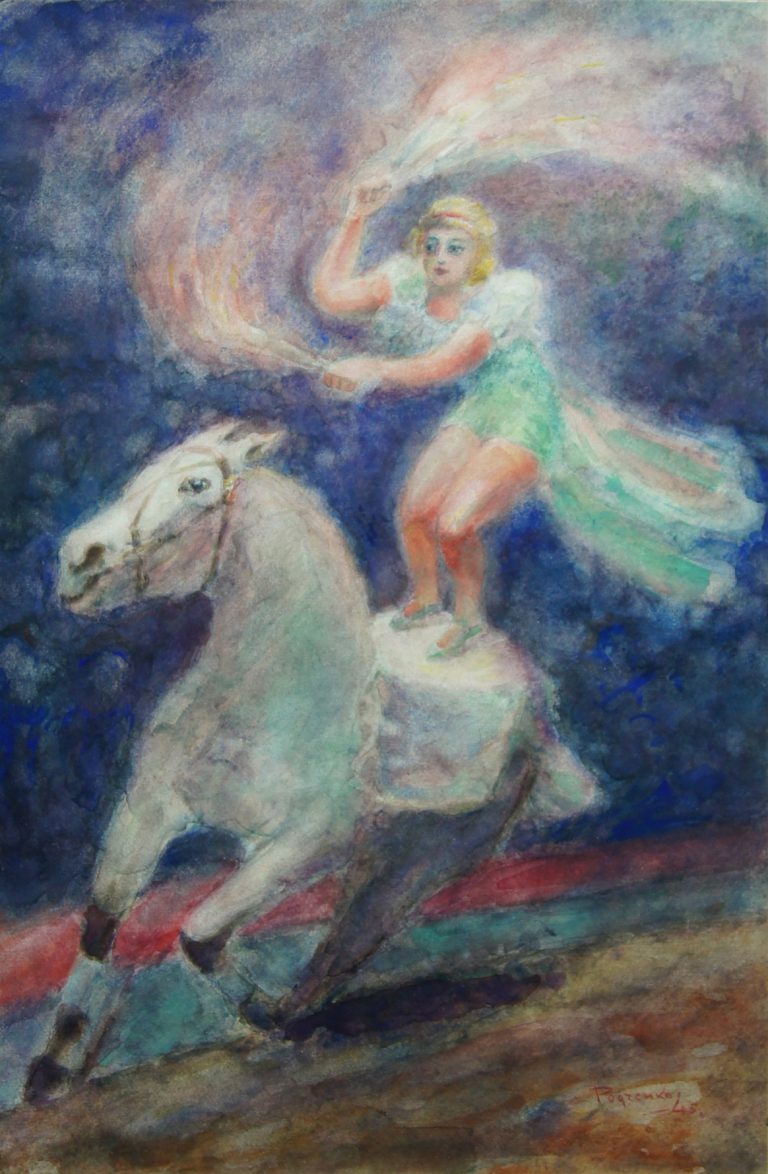Biography
Alexander Rodchenko was a Russian painter, graphic designer and photographer. He was one of the leaders of the Russian avant-garde of the first part of the 20th century, one of the founders of “objectless” painting, the “chief engineer” of constructivism and a pioneer of the Soviet photography, whose innovative works became classics when he was still alive. In addition, Rodchenko was one of the originators of the Soviet advertising and poster art.
Rodchenko was born in St. Petersburg on 5 December 1891. In 1902 his family moved to Kazan, where he finished the Kazan Parochial Primary School in 1905. From 1910 to 1914 he studied at the Kazan School of Art and, after he moved to Moscow in 1916, at the Stroganov School of Arts and Industry. In 1916 he began to take part in the most important exhibitions of the Russian avant-garde.
In the 1920s Rodchenko collaborated closely with Vladimir Mayakovsky in the area of poster and book design. In 1925 he took part in the International Exposition of Modern Industrial and Decorative Arts in Paris where he presented the design of a workers’ club and was awarded four silver medals.
Since the early 1920s he worked as a stage designer. In 1920 he drew costumes for Aleksei Gan’s We, which was never staged, however. In 1929 he designed Vsevolod Meyerhold’s production of Mayakovsky’s The Bed Bug. Rodchenko collaborated with the LEF (1923-1925) and Novy LEF(1927-1928) magazines, which published his articles and photographs.
Alexander Rodchenko is one of the brilliant figures of the 1920s. In his works he tried to merge technical and artistic challenges and to rethink the role of posters and advertisement. Rodchenko’s artistic evolution was multifaceted and his artistic path had several stages. The first one was his early symbolism of 1913 and graphic designs made in 1915 with a pair of compasses and a ruler. The second stage was his abstract paintings of the late 1910s and early 1920s. The third was his suspended constructions of 1918-1921. And the fourth was his photographs of the 1920-1930s.
Rodchenko’s paintings, graphic works and spatial objects were always extremely “technological”. Any of these was somewhat of a laboratory for an artistic experiment.
Alexander Rodchenko’s works are in the collections of many museums, including the Pushkin Museum of Fine Arts, the Tretyakov Gallery, the Russian Museum, the Museum of Modern Art in New York, the Art Institute of Chicago and Museum Ludwig in Cologne, Germany.

